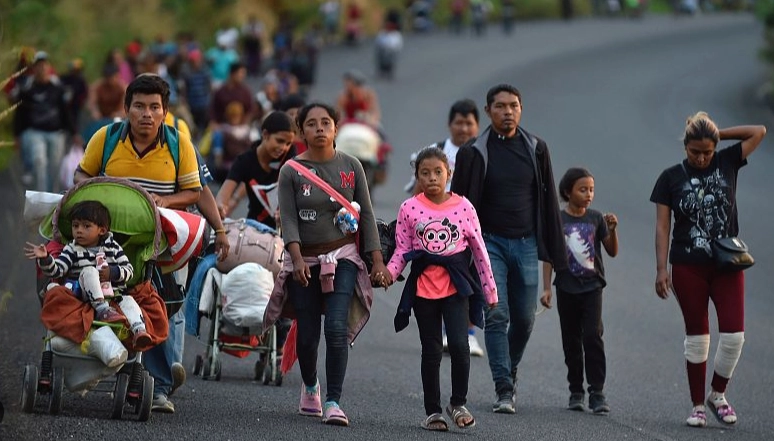In an April 2023 press release, the United States government, through the Department of State and the Department of Homeland Security, announced significant changes related to migration management. The primary focus was on reducing irregular migration in the region by expanding new legal pathways for protection and implementing safe and orderly migration processes.
As part of these actions, the temporary public health order under Title 42, implemented during the Covid-19 pandemic, was terminated. However, the lifting did not imply an unconditional opening of the border. Since May 11, the United States resumed using migration authorities under Title 8, aiming to process and, in cases of irregular entry, expel individuals from the border more efficiently.
To manage migratory flows in a coordinated manner, the United States established migrant processing centers outside its territory, strategically located in key countries in Latin America. These centers would facilitate migrants’ safe and orderly access through legal pathways. Additionally, a campaign against smuggling in the Darien corridor was launched in collaboration with Panama and Colombia to combat criminal networks.
These measures sought to alter the incentive dynamics driving irregular migration, attempting to prevent migrants from risking their lives on routes dominated by trafficking and human smuggling networks.
Six months after the implementation of these migrant processing centers outside the United States, driven by the Safe Mobility program, supported by the United Nations Refugee Agency (UNHCR) and the International Organization for Migration (IOM), the assessment of their impact reveals significant challenges. Despite necessary adjustments in migration policy, these centers are not only overwhelmed but have also failed to curb the constant flow of migrants through risky routes.
The idea of outsourcing the migration process has sparked intense debate about the United States’ responsibility to protect the rights of asylum seekers and refugees. Amidst this discussion, a need arises to find a balance between efficient migration management and respect for human rights.
To better understand the changes brought about by the Biden administration, as mentioned earlier, we need to go back a few months when the repeal of Title 42 was announced. The link between the end of Title 42 and the creation of migration centers is undeniable. The revocation of this emergency measure not only altered conditions at the border but also raised questions about the capacity of centers within the United States to address the situation.
The repeal of this provision, after three years of the pandemic, marked a shift at the southern border of the United States. The health emergency, which allowed the expeditious expulsion of asylum seekers to Mexico, gave way to Title 8, which is a long-standing law modified with new rules that toughened conditions for the entry of irregular migrants.
These new measures introduced harsher consequences for those attempting to enter the United States irregularly. Although Title 8 allows more time to present asylum cases, recent modifications establish limited circumstances under which a petition will be accepted.
Unlike Title 42, which did not set reentry bans, Title 8 imposes stricter restrictions. Those deported under these new rules will be barred from entering the United States for at least the next five years, and those attempting to reenter could face criminal proceedings.
However, the Biden administration emphasized the importance of providing legal and safe pathways for migration. In this regard, even before the end of Title 42, the creation of migrant processing centers in Latin America had been announced to allow migrants to apply to enter the United States.
In June 2023, the United States government announced the opening of these migration centers at various points in the region. Historically, migration control strategies had primarily focused on Mexico and Central America. However, the opening of centers in Colombia and other countries in South America suggests a shift in focus toward a hemispheric migration policy.
Currently, centers of the Safe Mobility initiative established in various Latin American countries offer specific programs for different nationalities. The Safe Mobility program in Colombia is aimed at Cuban, Haitian, and Venezuelan nationals who are present in Colombia on or before June 11, 2023. This program seeks to facilitate their safe and legal transfer to the United States and other countries. This recognition places Colombia as a crucial point on the route of thousands seeking refuge, especially through the perilous journey through the Darien jungle.
Similarly, in Costa Rica, Safe Mobility is intended for individuals of Nicaraguan and Venezuelan nationality that are in Costa Rica on June 12, 2023, or earlier. In Ecuador, the initiative focuses on individuals of Cuban, Haitian, Nicaraguan, Venezuelan, and Colombian nationality present in Ecuadorian territory on October 18, 2023, or earlier. In the case of Guatemala, the program is designed for individuals of Guatemalan nationality.
These new procedures aim to provide legal and safe pathways to the United States, seeking to reduce the need for refugees and migrants to risk their lives with traffickers and avoid journeys through dangerous and irregular routes. Moreover, those eligible will have the opportunity to be considered for regular admission to other countries, such as Spain and Canada.
However, the alternative of considering other countries as host nations must be carefully monitored to avoid diplomatic tensions on the one hand and, most importantly, to guarantee the rights of this population.
The decision to open these centers comes at a politically delicate moment for the Biden administration. Criticisms from the opposition regarding the management of migration and accusations of encouraging it have been persistent. With the 2024 elections on the horizon, Biden faces pressure to address migration effectively to avoid negative political consequences.
One of the most pressing challenges lies in the capacity of these centers to efficiently handle the asylum application process. Previous experience with similar centers has highlighted the importance of expediting procedures to prevent delays that could contribute to difficult humanitarian situations in these third countries. The lack of a quick response leads to center congestion and prolonged waiting for migrants.
For example, in the case of Colombia, applications open every business day from eight in the morning for a limited time until a daily quota is reached. On most days, this quota and closure are fulfilled before noon.
Critiques of the implementation of these centers were not long in coming. Non-governmental organizations and human rights defenders have expressed concern about these centers’ actual capacity to ensure dignified conditions for migrant individuals. Lack of transparency in processes and the potential for human rights violations are legitimate concerns that must be addressed to ensure compliance with international standards.
The role of migration centers thus becomes a focal point to assess not only the effectiveness of the United States’ migration policy but also the ability to coordinate regional migration management, a demand repeatedly voiced by civil society recently.
Recent programs for Venezuelans, Haitians, Cubans, and Nicaraguans demonstrate an effort to offer legal pathways for migration, recognizing the dire situation in their home countries. However, requirements, including the need for a sponsor in the United States, could exclude vulnerable and disadvantaged individuals or, in the worst scenarios, facilitate human trafficking.
Despite efforts to anticipate a possible major migration crisis, challenges persist. The cunning of criminal networks to continue recruiting people through the Darien or maritime routes and uncertainty about the speed of processes in the centers are factors that have affected the functionality of this measure.
*Translated by Ricardo Aceves from the original in Spanish.












